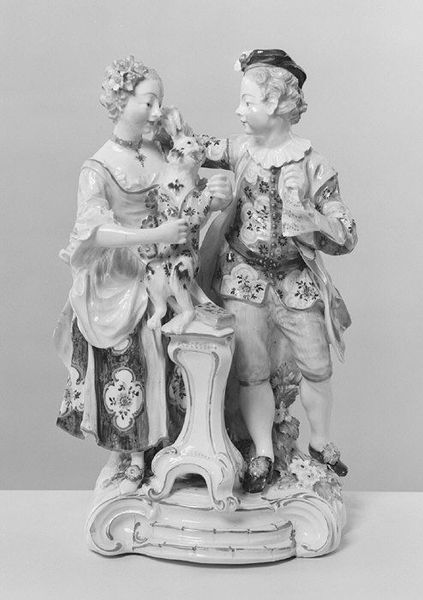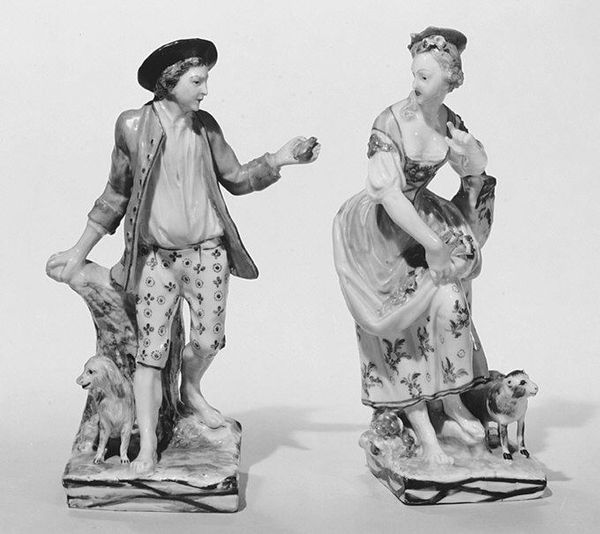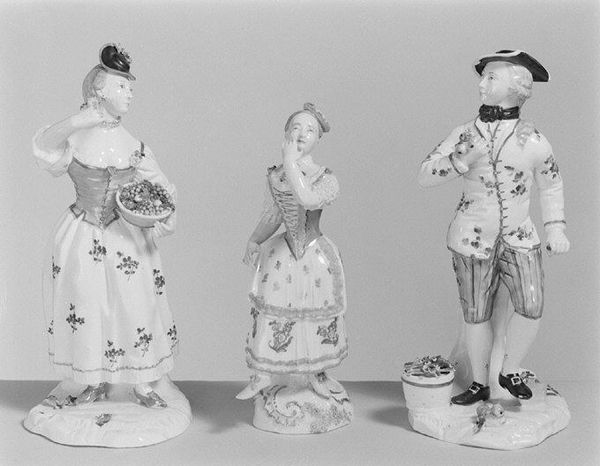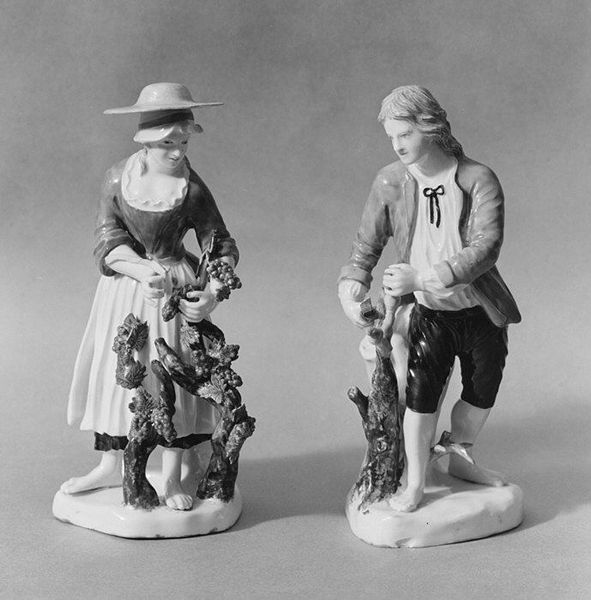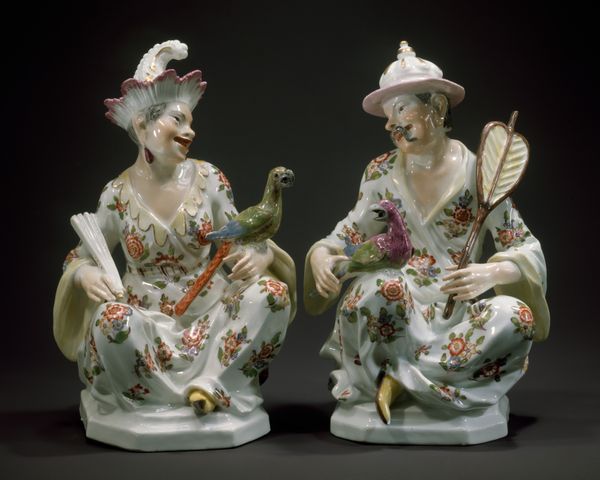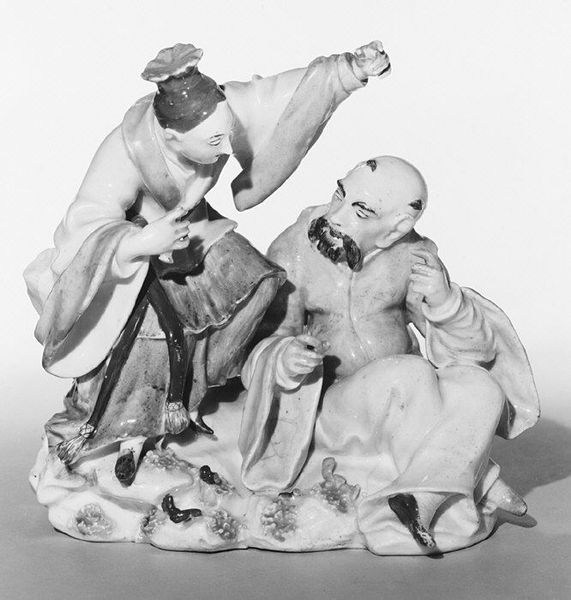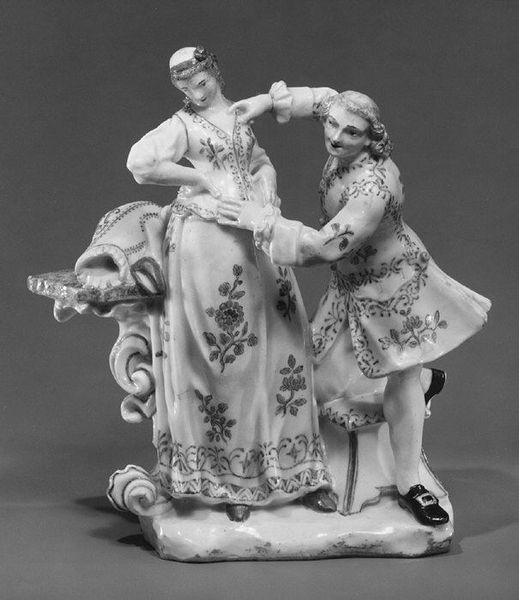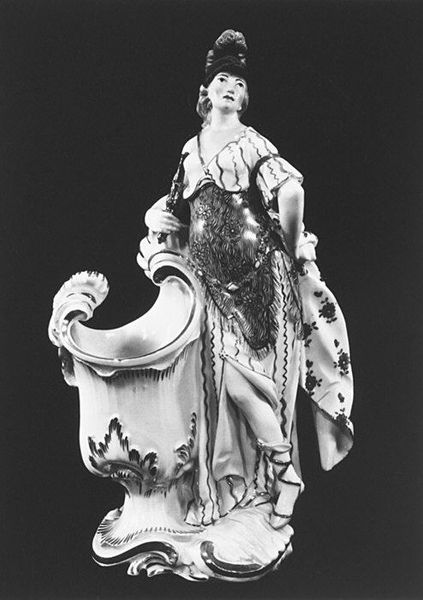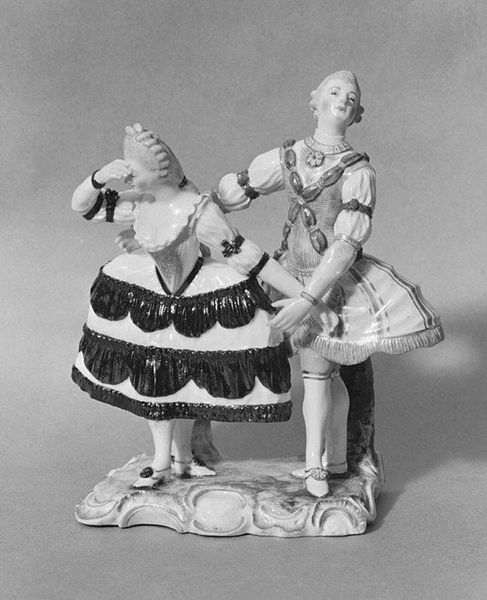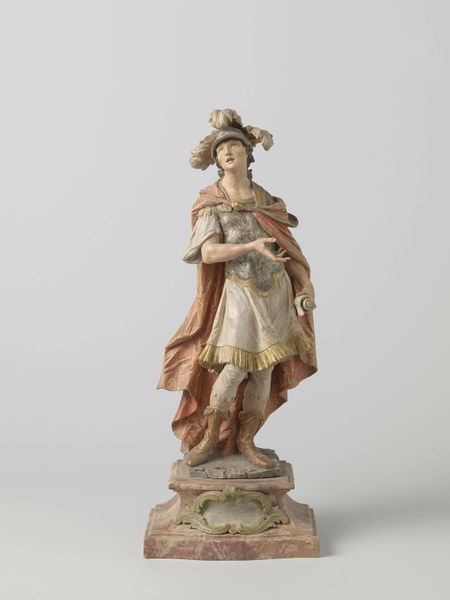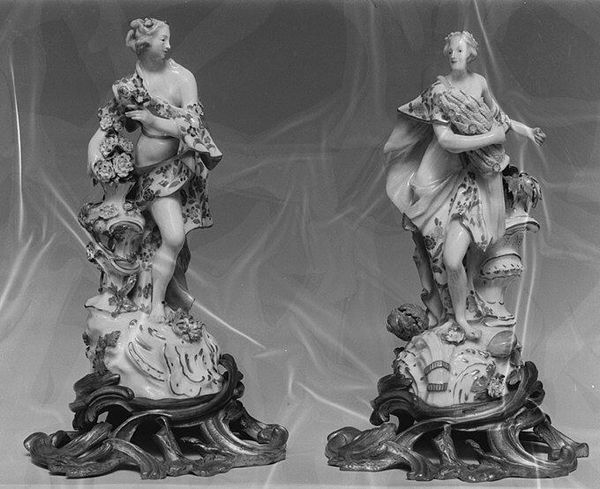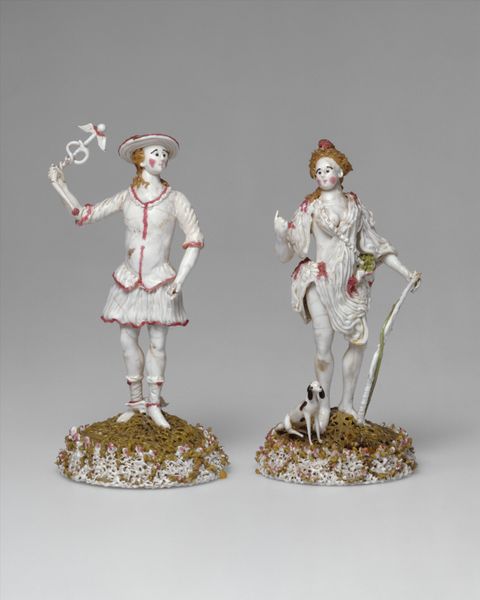
Chinese musician (Malabar) (one of a pair) 1760 - 1765
0:00
0:00
ceramic, porcelain, sculpture
#
portrait
#
sculpture
#
ceramic
#
porcelain
#
sculpture
#
men
#
musical-instrument
#
decorative-art
#
rococo
Dimensions: Height: 12 1/4 in. (31.1 cm)
Copyright: Public Domain
Curator: Just look at these porcelain figures! We have here one of a pair of Meissen figurines titled "Chinese Musician (Malabar)," dating from around 1760-1765. They're currently housed at the Metropolitan Museum of Art. Editor: They’re delightful! So elegant and poised, though there is something almost melancholy about the figures. Their eyes don't quite seem to meet yours. A dream-like performance of some exotic song. Curator: It’s important to remember the Rococo period's fascination with Chinoiserie. This wasn't necessarily about representing cultures accurately, but more about capturing the European imagination of the “Orient” as fanciful and decorative. Editor: Oh, absolutely! It’s like taking a beautiful dream and making it solid and purchasable. You can see it in the clothes they wear: elegant kimonos with fine floral patterns. This sort of porcelain seems designed to reflect the delicate fantasies of a wealthy European clientele. I think that the choice of material reinforces it. Porcelain, an "exotic" material by itself, embodies that quest for refinement and elegance. Curator: The medium is absolutely key here. Meissen was one of the first European producers of porcelain, a closely guarded secret. The choice to depict these "exotic" figures elevates the cultural significance. By taking this material that has become available only very recently to European markets, it shows they are no longer confined by geographic knowledge and social standards, so they portray that fascination of going beyond borders, either mental or social. The sculpture speaks to how that impacts arts, and reflects itself in fashion, art. Editor: The little bases made to resemble clouds make me think these performers float, they are lighter than air! More spirits than human beings. Do you think these works can promote acceptance, or do you feel these porcelain renderings were inherently appropriative, reflecting power dynamics between Europe and Asia? Curator: It's a complex question. While the figurines were born from an imaginative exoticism that lacked authenticity, they contributed to shaping how we understand and look at other cultures, for good or worse. This work offers us today the opportunity to reflect critically on representation. Editor: Exactly. Perhaps, after all, we're the ones interpreting it in our own "Rococo" way now.
Comments
No comments
Be the first to comment and join the conversation on the ultimate creative platform.

